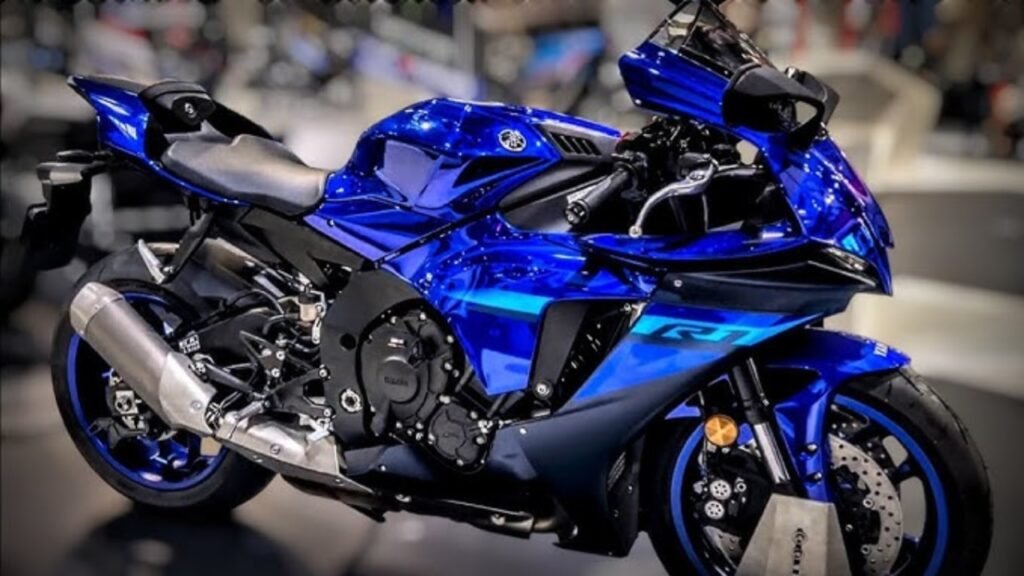Yamaha YZF R1 2025 is not just a bike; it is a legend in the superbike world. Launched first in 1998, the R1 completely changed how people looked at litre-class motorcycles. It has always been built with MotoGP-inspired technology, making it one of the most advanced sportbikes for road and track use. The design, performance, and electronic package make the R1 a dream bike for many riders in India and worldwide. In this review, we will discuss its design, engine, performance, electronics, riding comfort, and price expectations.

Design and Styling
The Yamaha R1 is pure aggression on wheels. The sharp twin-eye LED headlamps and aerodynamic fairing are designed straight from Yamaha’s MotoGP bike, the YZR-M1. Its aggressive tank shrouds and sleek bodywork not only look stylish but also reduce drag at high speed. The bike has a slim and compact tail section with LED indicators that match its sporty look. The riding position is aggressive with clip-on handlebars and rear-set footpegs, perfect for track riding. Yamaha offers the R1 in attractive race-inspired colours which enhance its premium feel.
Engine and Performance
The Yamaha R1 comes with a 998cc, liquid-cooled, 4-cylinder crossplane engine. This crossplane technology makes the power delivery very linear and smooth, giving riders better control. It produces around 200 PS of power at 13,500 RPM and 112 Nm torque. This engine is paired with a 6-speed gearbox with quick-shifter for clutchless upshifts. The R1 is built for high-rev performance, and when you open the throttle, the exhaust note itself gives goosebumps. The bike can easily cross 280 km/h, making it one of the fastest legal superbikes available in the market.
Electronics and Rider Aids
One of the biggest highlights of the Yamaha R1 is its advanced electronics package. It comes with a six-axis IMU (Inertial Measurement Unit) which constantly monitors lean angle, slide, and pitch. With this system, you get traction control, slide control, wheelie control, launch control, engine braking management, and cornering ABS. All these features are customizable via the TFT display. Yamaha also gives ride-by-wire throttle with multiple riding modes like Track, Street, and Rain. These electronics make the R1 not only powerful but also safe and user-friendly even for less experienced riders.
Chassis and Handling
The Yamaha R1 is built on a lightweight aluminium Deltabox frame which makes it very agile. The front gets fully adjustable 43mm KYB USD forks, and the rear gets a fully adjustable monoshock. With a wheelbase of just 1405 mm, the bike feels very compact and sharp in corners. The suspension is tuned for track performance but can be adjusted for road comfort. The wide tyres with Bridgestone Battlax give superb grip while leaning at high speed. Overall, the R1 feels extremely responsive and confidence-inspiring while cornering.